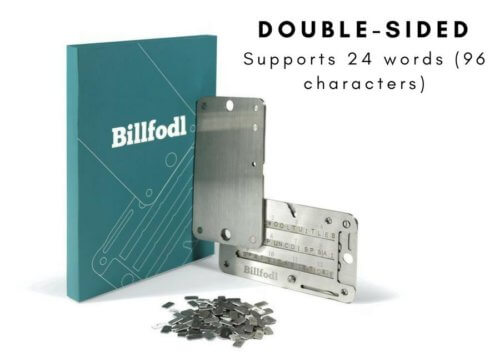The White Papers:
About:
A white paper is defined as a marketing document designed to explain a complex product or service and persuade you into believe in its benefits.
The purpose of a white paper is to create interest, educate, and sell a concept to potential buyers.
With crypto, white papers are created as one of the very first documents to explain what it is, what makes it unique, describe the technology behind it, etc.
Unlike typical sales material, a white paper is more conservative.
It is less about sounding special, and more about providing facts, statistics, and explanations.
They are often 6+ pages long and include a title, table of contents, introduction, pages describing the problem and solution, and a conclusion.
A good white paper builds trust in potential buyers.
In the cryptocurrency space, a whitepaper is a document presented by a start-up with the intention of informing and encouraging investors to participate in the start-up’s ICO.
If you are unsure about what an ICO is, then please check out this article here.
A whitepaper contains more technical and in-depth discussions on the project that the start-up is building.
This could include:
- The consensus algorithm the project decides to use, how the nodes that operate on project’s platform would function, and the token system.
- Although not all white papers will have the same structure, they tend to discuss in some form or another the following topics...
Introduction:
-
Definition of the problem
-
Project’s technical solution
-
Applications of the project
-
Roadmap
-
Token sale
An introduction is important in providing a primer as to what the reader can expect from reading the whitepaper.
It can vary in technical difficulty depending on the audience that the whitepaper is intended for.
A definition of the problem that the start-up is trying to solve provides context as to why the project is needed in the first place.
The clearer the definition of problem to the reader, the easier it becomes for them see the need and therefore the potential benefits of the project.
The project’s solution to the proposed problem is an area of a whitepaper that tends to be more technical.
It demonstrates to those able to understand that the project is feasible.
It also shows to an extent, that the team behind the project has a good grasp of the technology in-order to successfully implement it.
A start-up’s white paper is likely to detail the relevant applications of their actual project. For example, the application of Bitcoin as a peer-to-peer electronic cash system.
Or the application of Ethereum as a decentralized platform that runs smart contracts. It is paramount that a start-up can demonstrate a real-world application for their project.
A roadmap sets out a project’s objectives and a date for which they intend to achieve this by.
A roadmap is important in managing the expectations of the people interested in a project.
The more realistic the roadmap, the better managed the expectations of the stakeholders will be.
If a project habitually fails in meeting the goals set out in their road-map, it may be point of concern for the investor.
This section typically contains details on the sale of the token, such as: Duration of the token sale, the number of tokens that will be on sale, and how to participate in the token sale.
With the recent throng of ICOs, it is important to understand the information that present in their whitepapers.
To do that, it’s important to understand what a whitepaper is.
How to Read a Cryptocurrency Whitepaper.
Cryptocurrency White Papers 101:
If you’re interested in the blockchain space, whether as an investor, businessperson, or developer, one thing you can’t avoid is white papers.
Every week, there is a new blockchain or cryptocurrency white paper touting new technologies that will “revolutionize” the industry.
In addition, many of the major projects in the industry, like Bitcoin and Ethereum, began with white papers.
As a result, white papers have come to be known as an essential part of creating a new blockchain project or cryptocurrency. Investors, businesspeople, and developers expect to see a document that explains what problem the project solves and how it does so.
Consequently, learning how to read a white paper is a critical task for anyone getting involved in crypto. As most investors and observers in the industry know, there are quite a few scams in the space.
Understand that, many projects sound good, with the right buzzwords and marketing speak, but they’re not backed up by any follow-through, and they quickly fizzle out. In this article, we’ll take a look at how to spot a good white paper with a valid idea and technical chops to actually execute on the idea.
White papers are documents that explore a use case for a product or service.
While most blockchain investors think of cryptocurrency white papers, they have a long history in technology and business generally.
The White papers are not limited to technical applications, and there really aren’t any rules for what constitutes a white paper.
Anyone can publish one. Ultimately, they’ve become as much about marketing as they are about explaining a problem and a solution.
Savvy companies use white papers to establish themselves as experts in a domain, in the hopes that competitors in the industry will reference their “research.”
However, white papers have no peer review and no limitations. It’s helpful to think of them just as “reports” or even “idea papers.”
The term “white paper” has developed a cachet around it that signals technical expertise. But I hope by now you realize that might not be the case.
Just because it’s called a “white paper” doesn’t mean that it’s special or different from any other marketing document.
Therefore, you would be wise to not always believe what you read and constantly question any white paper you come across.
Not all white papers are garbage. Now, Satoshi had an original vision for the Bitcoin protocol came in the form of a white paper.
The next great blockchain platform will also likely have a white paper ahead of its working product. However, be wary.
Scam coins and pointless projects can have white papers, too.
There are a couple key questions you should ask to determine the legitimacy of a cryptocurrency white paper:
I. What does this project do?
The first question should be fairly straightforward, but quite often you’ll find white papers are confusing.
The combination of buzzwords, technical jargon, and made up names that you find in the typical cryptocurrency white paper is frequently difficult to decipher.
If you’re not sure what the project does, there are two likely conclusions. Either the project is so advanced that you’ll need more knowledge before you understand it, or the project doesn’t really do anything.
In either of those cases you probably shouldn’t invest in the project yet.
If you’re not sure what the project does, there are two likely conclusions. Either the project is so advanced that you’ll need more knowledge before you understand it, or the project doesn’t really do anything.
In either of those cases you probably shouldn’t invest in the project yet.
No matter what other people say or what you’re reading on Twitter, Reddit, or the forums, if you don’t understand a project, don’t invest in it.
II. How does it work?
After you find out what a project aims to accomplish, the next question is “How?”
Bitcoin and white paper:
A good cryptocurrency white paper should explain how the technology will work, and the best white papers do so with varying levels of complexity and technical knowledge required.
This is where the original Bitcoin white paper really shines.
It is among the most readable and understandable blockchain white papers ever written.
It’s also not very long, in contrast to many modern white papers.
If you’ve never read it, the Bitcoin white paper is a good place to start.
It will give you a good baseline for what a great cryptocurrency white paper looks like.
Technology meme:
By the end of the white paper if you can’t articulate what problem the project solves and how it does so, then the white paper did a poor job.
In fact, a well-articulated white paper is a sign of a well-thought out project. On the other hand, the opposite is also true.
III. Why do we need this project?
I could build a blockchain project that specializes in underwater fire protection, but would we really need it?Obviously, that’s not a serious project. Nevertheless, it does raise an interesting point. It’s critical that you examine the project in the context of the real world.
Who will actually use this product, and why is this solution better than anything they currently have?
If the cryptocurrency white paper gives a solid answer to who needs this project and why they need it, then you’re onto a good idea.
However, before you invest your time or money in the project, do some research to see if someone else is already doing the same thing better.
There are hundreds of blockchain projects out there, and perhaps a similar project already exists.
IV. Why do this on the blockchain?
Not every project needs to be built on the blockchain. There, I said it.Blockchain pulp fiction:
Our current internet is a powerful tool, and many of the blockchain ICOs we’re seeing should really just be web apps.Moreover, a lot of ordinary businesses are trying to capitalize on the blockchain trend to get access to capital.
That said, there’s nothing wrong with launching a company with an ICO for the fundraising model.
However, many startups try to sell their company as a novel use of blockchain technology when it’s really just a regular business.
The best white papers will be honest about why their solution needs the blockchain.
Many projects freely admit that they’ll only be using the blockchain for token generation and some smart contracts management, and that’s perfectly okay.
But if a startup claims to have some novel idea for blockchain-based carwashes or something like that, beware.
Go With Your Instinctive Common Senses, or Develop Them...
Focus on common senses based on your-own crytocurrency knowledge.




























